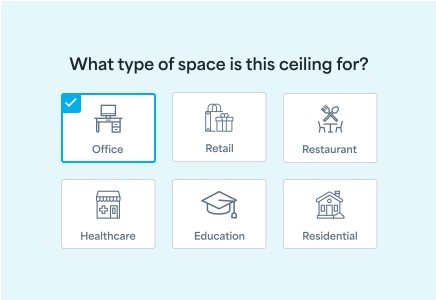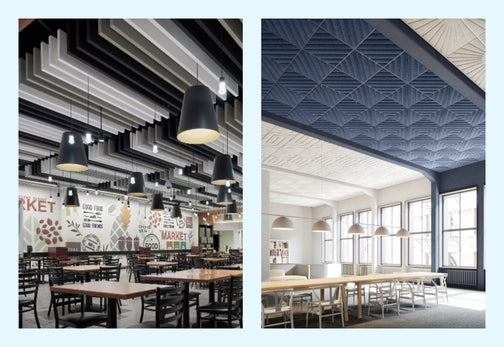A. Store and install panels in areas with temperature and humidity ranges that meet specific product warranty requirements.
B. Remove panels from the cartons 24 hours before installation and allow them to adjust to normal interior conditions of the area where installation will take place.
C. Never install ceiling panels below an existing ceiling that contains embedded radiant-heat coils. Do not apply loose fill or batt insulation so that it rests directly on the panels.
D. Keep hands clean to avoid smudges on the finished ceiling.
E. Always cut mineral fiber or fiberglass ceiling panels face up with a sharp utility knife.
F. Main beams should be installed perpendicular to the joists.
G. Main beams are typically installed 4’ on center. If your room configuration is unusual, you may require additional components. Watch a video about ceiling layout considerations.
H. To allow for ceiling tile installation and accessibility, the minimum drop is 3" with traditional hanger wire.
I. Installations with light fixtures will likely require additional clearance and support. Consult the light manufacturer’s instructions for details.
J. When installing below an existing drywall ceiling, a minimum 4" drop is required to install panels. Joists will need to be located and marked.



 Thanks for subscribing!
Thanks for subscribing!